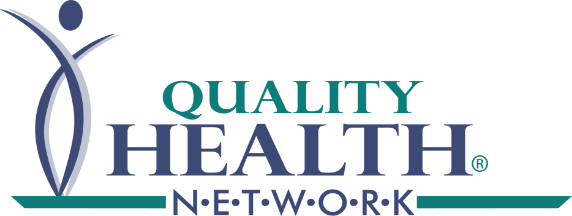For more than 14 years, health care providers across western Colorado have been receiving interpretations of medical imaging procedures from Quality Health Network (QHN), the region’s health information exchange. While feedback was positive, one gap existed: they wanted to see the actual images themselves without hassle. Retrieving these relevant images from external locations has historically been an exercise in time and patience. Clinicians would log into individual hospital PACS platforms, using separately maintained credentials, to review radiography studies, EKGs, and other visual-centric records. In a time when operating efficiency was paramount, it was anything but straightforward.

EHR Interface Manager at QHN
“Then we introduced Image Exchange,” said Laura Head, EHR Interface Manager at QHN. “The benefit was almost immediate, with providers quickly understanding that those critical studies were now accessible with one click.”
eHealth Connect Image Exchange integrates with all common PACS technologies and with virtually all HIE and electronic health record (EHR) platforms. With a single click, authorized HIE users can launch a study of interest from any connected imaging location on eHealthViewer® ZF—a zero-footprint, web-based, diagnostic-quality viewing platform. That ability is amplified when sub-specialists conduct remote clinics across the region. Using the QHN Internet login, they can view images that otherwise could not be rapidly accessed.
“We provided lots of education and outreach before Image Exchange was activated. Those who were fastest to adopt the technology were the biggest proponents of others doing so as well—hospitals encouraging other hospitals to connect to realize the maximum benefit for providers and patients,” noted Head.
It’s little surprise why QHN users— which number more than 3,600 across its service area— were quick to find value in Image Exchange. In addition to decreased administrative burdens made possible through single-platform access, they also began experiencing fewer delays caused by wayward image deliveries, reduced the need for duplicative exams, and in turn limited unnecessary radiation exposure for patients.
Benefitting Clinicians and Support Staff Alike
Information Technology departments see the value as well, including the IT director at a hospital served by QHN. “Anything we can do to reduce the number of steps for our physicians to allow them to provide safer and more efficient patient care is what we are all about. We have been maintaining VPN tunnels with various hospitals to allow their providers to access our PACS; this is very laborious and not always stable. This new QHN technology allows us to maintain one point of contact, one point of management and multiple points of redundancy to avoid failure and allow providers to look at the images, from any location, without another login.”
“It’s important not to overlook the impact on support staff, who bear much of the burden that consumes time and energy without much recognition. Working with the eHealth Technologies solution, including the HIE-Wide Patient Worklist, helped free their time to be applied elsewhere, improving patient care,” continued Head.
The Image Exchange HIE-Wide Patient Worklist, accessible by QHN patient summary users, displays all known imaging studies for a patient from across all QHN sources. This allow physicians and other care providers to readily view and compare studies from multiple locations in one viewing session.
Authorized users can then select and rapidly transfer relevant external imaging studies into their local PACS, helping to properly diagnose and treat more complex medical conditions, reduce costs, and radiation exposure for patients. In the QHN implementation, those images are transferred with a few clicks directly from its user interface, with the assurance that key image attributes in the DICOM header (e.g., patient ID (MRN) and accession number) are updated and accurate.
“This was huge—really huge—for our users,” noted Head. “You can imagine the effort it took for radiology staff to move images from one PACS to another, especially when they needed a high degree of quality control. Throw in faxing, phone calls, and even physical transfers, and the time and related expense becomes clear.”
Expanding Impact, Enhancing Value
In the case of QHN, not only did Image Exchange deliver operational and clinical advantages to its users, but it also helped further increase its own reputation as one of the nation’s most respected HIEs. The image exchange capability implemented by QHN helps the Medicaid Regional Accountable Entity achieve the state’s goals for improvements in quality and costs.

QHN Executive director and CEO
Image-Enabled Results Delivery, another QHN Image Exchange capability, enables secure links to be embedded within patient records that are delivered to external sources. This has enabled providers to access images without having to leave their EHR. It has also enabled QHN to share diagnostic images with other HIEs by way of the Patient Centered Data Home (PCDH), an initiative originally championed by QHN. “By bringing advanced yet easy-to-use health information technologies such as Image Exchange to thousands of users across 40,000 square miles of western Colorado, QHN becomes an even more essential part of the health care ecosystem,” said Dick Thompson, its executive director and CEO. “Now, with the evolution of Patient Centered Data Home, our ability to implement advanced systems is touching lives not only here, but potentially impacts lives in cities and towns from coast to coast.”
PCDH is a cost-effective, scalable method of exchanging patient data among HIEs. It’s based on triggering episode alerts, which notify providers that a care event has occurred outside of the patient’s “home” HIE, and confirms the availability and the specific location of the clinical data. This enables providers to then access information across state and regional lines for optimal continuum of care.
Practically speaking, PCDH might come into play when a skier who lives in Phoenix takes a tumble on the slopes of western Colorado, resulting in care at a QHN-participating provider. Not only is her primary care physician in Phoenix notified that she is being treated, but they have nearly immediate access to her records—including full-fidelity medical images because QHN has adopted eHealth Connect Image Exchange. That proves advantageous for immediate care coordination, as well as
follow-up treatment after she returns home.
Whether its being an early champion of PCDH or other interoperability advancements, QHN is known for pioneering approaches that improve how caregivers receive, analyze and share information.
“QHN prides itself on the levels of customization we provide for users, and the depth to which we’ll go to create the optimum EHR integration. We get them what they need, how they need it,” said Head. “The more we can help create a complete, accessible and accurate patient record, the more value the provider will find in the EHR—and the more value QHN will have to their success and the well being of western Colorado. eHealth Connect Image Exchange plays a significant role in that, and we’ve been able to efficiently deliver that in partnership with eHealth Technologies.”
